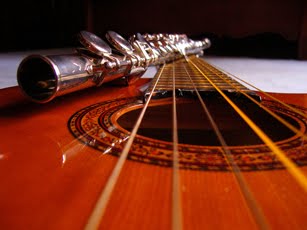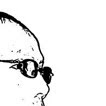
An “artist” is a person who “creates art, especially paintings, drawings, or sculptures” or “somebody who does something with great skill and creativity”. Used as a slang word, it could also refer to “somebody who is very good at doing something, especially something involving cunning or deceit.” (As defined by Microsoft Encarta)
In short, we consider a person an artist if he/she has skills that allow him/her to produce a work of Art, whether it is good or not and whether it is out of goodwill or ill-will. A person who paints forgeries is still an artist even though he violates the law. As in all fields, we have good and evil people trying to eke out a living, or, more precisely for some, to make a killing.
Art, as we know, is one area where rules are more often violated than observed. But as long as those “violations” remain within the purview of Art – what we call artistic license or freedom – no one can file a case against an artist. So it is naively assumed.
When Picasso distorted the human body form, he was criticized by some and praised by others. Eventually, his paintings rose is value in spite of (or is it because of?) his style. Skill and creativity, put together well, are potent tools for the artist to raise people’s perception of themselves, the world and life in general to heights of unchartered glory. At times, of engaging amusement. And at other times, of both glory and amusement, as when we watch great movies.
Courage allows an artist to accept challenges and make discoveries in the field of creativity. Like the mountain climber who, in reality, seeks inner adventure, the artist also rises beyond familiar horizons to attain what no one else has even attained before, including oneself. As some artists are wont to say, the more rules are broken, the better. The obvious reason is for people to notice their work above the commonplace.
But most artists remain happy working within the bounds of legality, morality, decency, economy and even acceptability. After all, living a peaceful and contented life is every person’s goal in society. Our basic human need for nutritious food and ample sleep remains in spite of our differences in the length of our hair or the type of footwear we use.
So, what do we make of this noise about Martin Nievera needing to explain before the Senate – and to the Filipino people, it seems – why he sang the National Anthem the way he did at the Pacquiao-Hatton fight? Why do many want to “hale him to court” while others “hail him to high heavens”? What gives?
Our understanding of Art essentially derives from our understanding of our environment, of our own being and the relationship of the two. We learned to draw as kids by imitating the basic forms we see: the human body, trees, mountains, animals and planets. We painted ourselves into our pictures of life. And together with this fundamental artistic process, we learned to accept the basic structures of society and how we must relate to them: the family, the school, the city or town, the government and its laws and the history of our nation. We imitated our parents and peers in how we behaved within this complex environment and eventually derived our own unique personality.
The real artist, the ubiquitous breaker of rules, always finds a way to do things better according to his/her perception. And more often than not, according to one’s artistic mood of the moment. The reason many people, who do not consider themselves artists, fail to appreciate what many artists do is because of their lack of a clear appreciation of what Art truly is. (Hence, this long intro to this article’s issue.) Many remain fixed to their concepts of structures they learned in grade school: the human body has one head, two arms, two legs and one torso. A family has one father, one mother and one or more children. And it follows: the National Anthem has only one melody. So the law says; so it must be followed.
Where then should a real artist stand in this environment? Let us retrace our steps.
Elementary never really taught us about the spiritual form or the “substance of things unseen”. Within our physical bodies lie our souls and spirits which artists can only portray in ephemeral colors or disembodied words. The reality of the unreal, for most kids, dwelt only in stories of fairies, ghosts, giants, dragons and angels. Until only recently, we never really got to provide children a solid foundation of the spiritual life. Even our musical artists today remain fixed in juvenile romantic forms just as our cultural vanguards continue to throw us back to Amorsolo’s pastoral world of kundimans and balitaws. Many progressive or liberal artists appear but most retain their attachment to the physical forms, a vestige of those ancient idolatries. Those who venture into esoteric or pure spiritual themes are a lot like Pilosopong Tasyo who live on the fringes of society. A few who venture near the center are bound to be – heaven forbid – crucified.
Our National Anthem grew out of a rebellion against oppressive rules and abject conformity. The French National Anthem – itself an expression of revolt -- gave our own hymn wings with which to fly. Yet in crafting a hymn out of an imported mother hymn, a musical structure had to be followed. It began as a marching tune, thus, lyric-less. The beat and the rhythm – and eventually the lyric -- expressed fervor and nationalistic pride. The final form was embraced by our ancestors. This form and substance we aim to preserve and propagate by law. Like teachers, we wish our children and everyone else to follow that form (count 120 beats per minute) and substance (hard to measure, this). As if that is all that is necessary to maintain love for country. It is a good step; but a good family-and-village foundation can take care of that once and for all.
In the end, a song is but a human symbol of the living and loving soul in us. Just us the body is but a visual Work of Divine Art of the spirit in us. Take away the song or replace it and you still have a Fil-Am living soul singing “O say, can you see!”. Take away the body and you have an eternal spirit. Christ Himself followed the Jewish laws faithfully; but, in doing so, He emphasized the fact that they were but forms of the reality He wanted attained by human spirits and, in fulfilling them, He thus abolished them. In place of the letter of the law, He put the spirit of the law. Instead of form and formality, He taught essence and freedom. In obeying the law (only He could) and finally “breaking” them out of use (to refresh us with new things), He proved Himself more than an artist. He invented Art (and Law), if you must believe.
We cannot possibly sing “Lupang Hinirang” as a nation if we sang together using different melodies. There is a place for singing it in unison and a time for singing it in harmony. There is a venue for singing it solo and another for singing it as a community. Finally, there is a time to sing and a time to simply listen to somebody sing. (Are we less patriotic or less Filipino if we only listened to someone sing our Anthem?) But to rein in the soul and the voice is to confine the spirit that seeks to escape the slavery of the human body.
The basic issue is the fight between flesh and spirit, between form and substance, between stagnation and innovation. To crucify our artists by forcing them to conform to the formality of our institutions would only harden our ears, our hearts and our minds against the call to genuine freedom of expression that democracy seeks to uphold.
Being an artist is not being enslaved by the forms and styles one has learned and practices but being aware of the possibilities given to the artist in perfecting the spirit within. Take it from the Inventor of Art.
(Photo above: The only rule that nature knows is birth, growth, decay and rebirth. Those who want to stagnate make laws that make concrete copies of pine trees.)


No comments:
Post a Comment